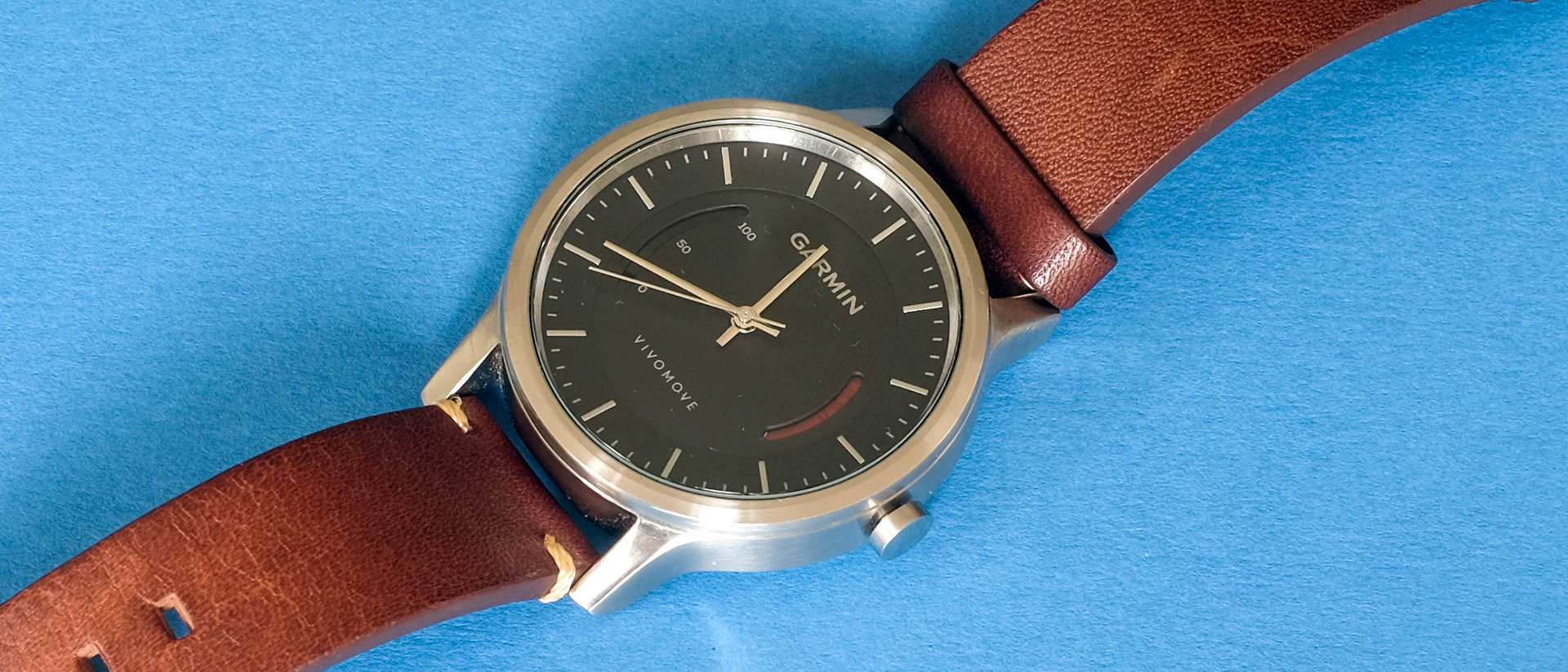TechRadar Verdict
It's short on sport-specific features, but the Vivomove might just be the classiest gadget Garmin has ever made.
Pros
- +
Smart design
- +
Comfortable
- +
Excellent battery life
Cons
- -
Limited fitness features
- -
No on-board GPS
Why you can trust TechRadar
Two-minute review
The Garmin Vivomove is a stylish watch that aims to deliver the best of both worlds: classic looks and key fitness tracking features – and for the most part, it delivers.
This is an unusual device for Garmin – a company that's best known for its GPS running watches, bike computers and GPS units. Not only does this watch lack any form of positioning system, it's not designed with sport in mind at all, with limited activity monitoring options.
Instead, the Vivomove is intended to replace your ordinary wristwatch for everyday wear. It has the looks of a more traditional timepiece, with an analog dial to show the time and only small progress bars on either side of the face to signal that it's anything other than a regular watch.
These indicators show you at a glance how close you are to reaching your daily step count, and how long you've been inactive for, but the smarts come when you sync it with the Garmin Connect app on your phone, revealing a more in-depth view of your wellbeing.
This watch is the original Vivomove, and has now been superseded by the Vivomove HR, Vivomove 2 and Vivomove 3, but it's stood the test of time well, and is still worth your consideration at the right price.
Price and availability
The original Garmin Vivomove launched in 2016, priced at £139 ($149, AU$249) for the rubbery strap Sport version, £179 ($199, AU$329) for the Classic model and £239 ($299, AU$479) for the steel and leather Premium edition.

Design and display
The Garmin Vivomove is as fancy as you want it to be, but all the versions are broadly similar in design. This watch looks just like a normal, fairly stylish large watch, and if it didn't have the Garmin logo at its centre I could easily have believed it was made by a regular watch-maker.
This is great news for those who don't like the geeky look of most fitness trackers and smartwatches, although the design does seem rather male-centric, at least in the case the Premium version we reviewed.
All Garmin Vivomoves have a 42mm watch face, with no option of a smaller one, but the different colour schemes tweak the design character a bit. Get one with a gold face and white strap, for example, and the look is softened.
As is always the case with this sort of thing, it's a matter of taste.
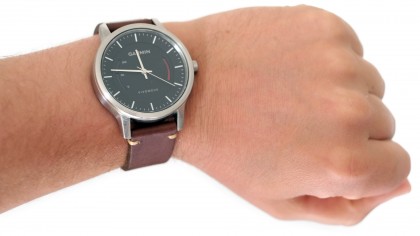
The build quality of the Garmin Vivomove Premium is fantastic. The main part of the watch is steel topped with glass, and the strap is leather. Garmin watches like the Fenix 3 feel tough despite being made largely of plastic, but the Vivomove is in a whole different category.
As with the look, the build is just like that of a higher-end standard watch.
The Premium version is the weightiest of the three Vivomove flavours at 67g, but it's really no bulkier or heavier than a standard watch of this style. And – no prizes for guessing this one – wearing it feels just like wearing a normal watch too.
The leather strap causes no irritation, and is comfy. I don't have any first-hand experience with the silicone strap version, but given Garmin's extensive experience of making watches, it doubtless knows by now which composites cause some people skin irritation.
Performance and fitness tracking
The Garmin Vivomove's face is as analog as it could possibly be, with no screen to suggest the tech at its core. The elements that make the Vivomove a fitness tracker/smartwatch are the little indicator bars at the left and right of the face.
The left bar measures how close you are to your daily steps goal. It's white, and fills up with little black segments as you move (or white segments on the models with black faces). The bar on the right is red, and this fills up if you're inactive. Move around for a few minutes and the red will disappear – as with your finances, you want to stay in the black if you can.
Like a Fitbit, the Garmin Vivomove tracks your movements using an accelerometer. There's no GPS here, and virtually no extra features.
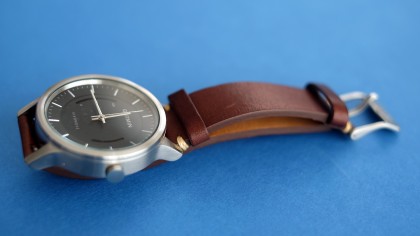
The Vivomove doesn't have an alarm or a vibrate function, and doesn't display any notifications. It's a tracker with very few goals, but it's this stripped-back approach that makes the watch so simple to use.
Everything you need to see is right there on the watch face, and it's likely to age better than virtually any smartwatch on the market. I can imagine still wearing this watch in five years' time, at which point wearing a current Apple Watch will seem hopelessly anachronistic.
Your data doesn't just stay on the watch, though. Like other Garmin watches, the Vivomove talks to your phone using Bluetooth, and uses the Garmin Connect platform to monitor your stats over weeks and months. Syncing doesn't happen constantly, but a one-second press on the button on the side performs a sync. It's a breeze.
The Garmin Connect software isn't the prettiest, though. I came to the Vivomove from using the Misfit Ray, and the Ray's software is far more attractive, and a lot slicker.
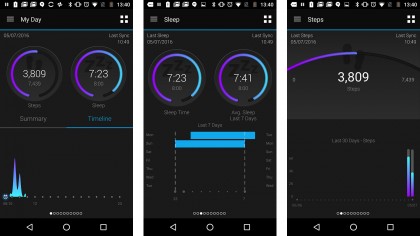
That said, it's roughly the same interface you get with some of the best running watches in the world, like the Garmin Fenix 3 and Forerunner 920XT, so it's certainly not bad. It produces graphs of your activity, per day and per week, and does the same for your sleep patterns.
I tend to take fitness trackers off when I go to bed, but I found the Vivomove comfy enough to wear through the night, which came as a surprise given that it's fairly large.
The app will show you how long you've slept each night, and, as is usual, the periods in which you were sleeping deeply. Of a little more interest, the app also offers a more 'analogue' graph that maps your movements through the night.
Is it useful? Not particularly, but it lets you see if you slept as badly as it feels like you did on those rough mornings.
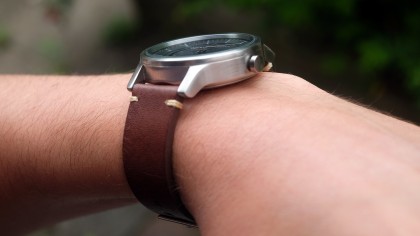
The watch's pedometer algorithm is also clever enough to discount movement while you're just sitting at your desk. No wrist-worn tracker is going to be super-accurate, but at least you won't rack up hundreds of steps just by tapping away at spreadsheets.
I can imagine plenty of people who have no experience of Garmin's running watches wanting a Vivomove; it's perfect for those who are only after very light data. But as the Garmin Connect app is also designed to take in far more sophisticated info, from Forerunners and other sports devices, it doesn't feel all that well tailored to this particular watch.
It speaks to far deeper fitness tracking that the Vivomove just can't provide, and that can feel alienating. If you want a watch to monitor your marathon training, I'd recommend getting a GPS running watch rather than this one.
Compatibility and battery life
The Vivomove is terrifically low-maintenance. Garmin says it'll last a full year off a battery, for a start. It uses a CR2032 cell like plenty of regular watches, and you'll have to take it to a specialist to get this replaced – having this done properly is crucial to maintaining the Vivomove's water seal, so think carefully before just buying a watch tool kit from eBay.
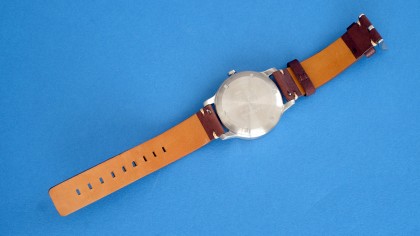
The watch is waterproof to 50m or 5ATM, so you can take it swimming or diving if you like; however, you'd probably want to get the silicone strap Sport model, rather than the more expensive leather strap version I'm testing.
The Vivomove works with almost any current smartphone. Support for Android and iOS is virtually a given, but Windows 10 devices will work too. As long as your phone has Bluetooth 4.0, the two should get on just fine.
We don't like using a company's own words to describe their products, but Garmin's claims of 'timeless design' are spot on. If you're worried about spending a bunch of money on a fitness tracker or smartwatch, only to be embarrassed to wear it a couple of years down the line, the Garmin Vivomove is worth serious consideration.
A key part of the Vivomove's appeal is how little of that appeal relies on the tech inside. It's a lovely watch, and the way it relays its fitness data on the face is entirely subordinate to this classic 'watchy-ness'.
We liked
Living with the Garmin Vivomove is just like living with a normal watch. There's zero faff involved, meaning it's worlds apart from the Apple Watch or any Android Wear watch.
The activity displays on the Vivomove's fascia are excellent too, giving you a quick activity update that tells you what you need to know from the quickest glance. The one-year battery life is excellent as well.
We disliked
You can't approach the Garmin Vivomove with the intention of comparing it with any of Garmin's other watches. This is a basic fitness tracker, with very limited smart skills.
The Garmin Connect software also lacks the gloss of the apps you get from Fitbit and Misfit, two of the top producers of accelerometer-based trackers like this one. You may even end up ignoring the app most of the time.
There are a couple of features we'd like to see in a future version of the Vivomove too, even if it wasn't one designed to replace this watch. An alarm, and some way to light up the watch face at night, would be handy.
Verdict
The Garmin Vivomove doesn't appear to be an ambitious watch. Its smarts are primary school level, and there's very little that could be added with further software updates.
However, the extent to which it innocuously weaves fitness tracking into a classic watch design is ingenious. It may not please the hardcore gadget crowd, but it's a delight to just live with.
First reviewed: August 2016
Andrew is a freelance journalist and has been writing and editing for some of the UK's top tech and lifestyle publications including TrustedReviews, Stuff, T3, TechRadar, Lifehacker and others.
